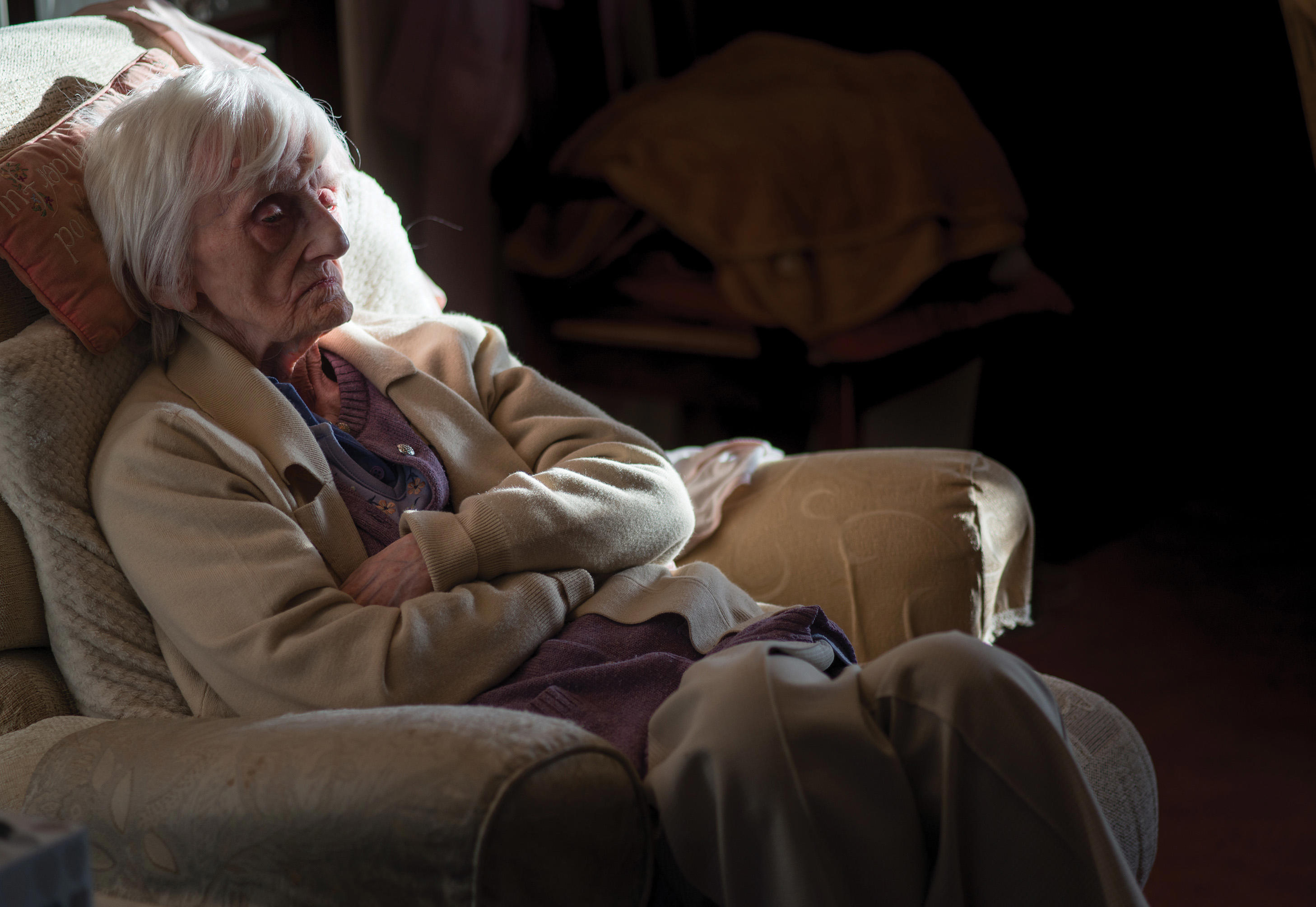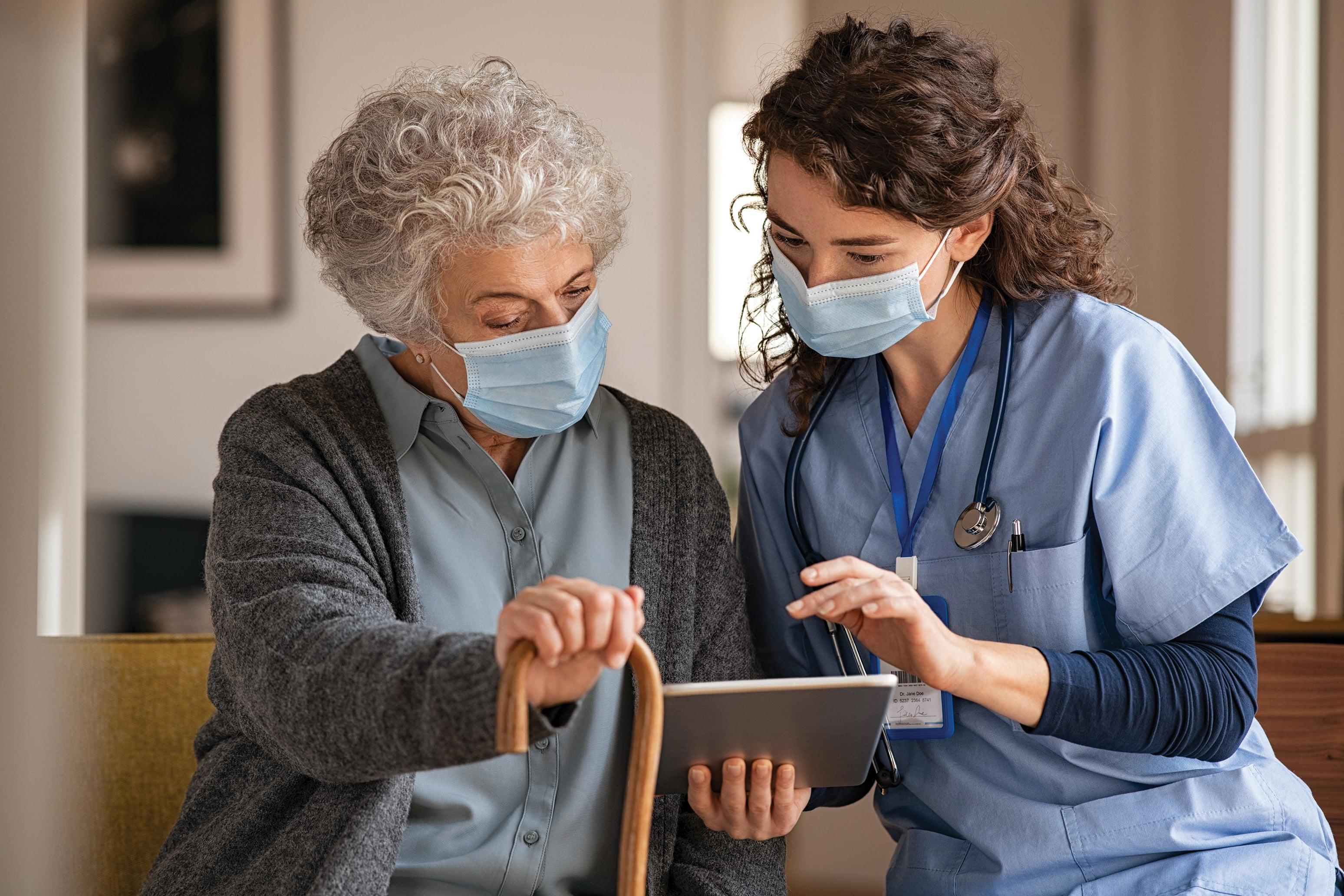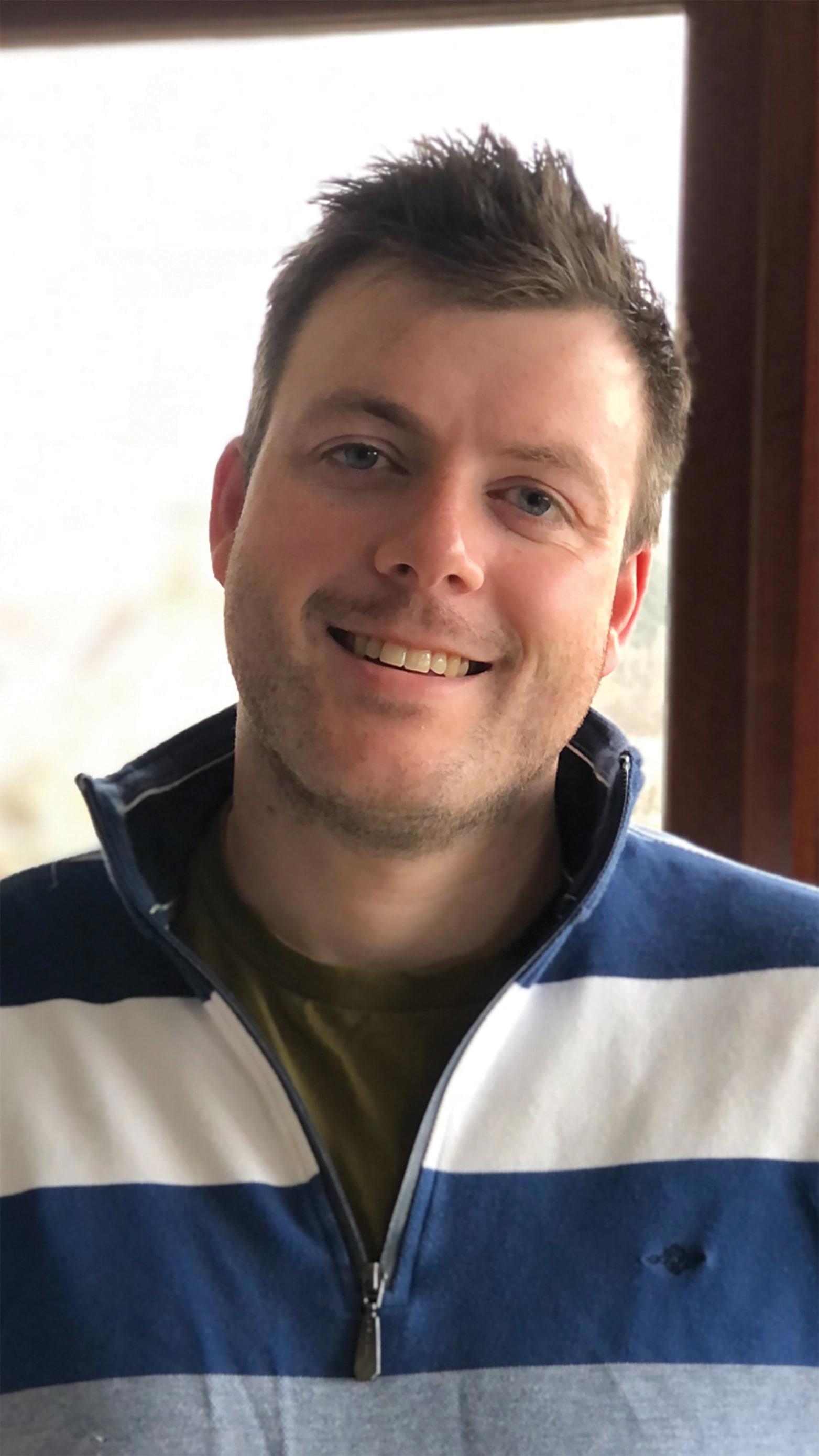When GP Aaminah Verity’s London practice moved to digital triage in April 2020, something unexpected happened to the appointments diary.
North Lewisham, the area they serve, has high levels of social deprivation, including a large migrant and homeless population. There is also a university nearby.
‘Suddenly, we were only seeing 20- and 30-year-olds with skin conditions, lumps and bumps, urine infections and thrush,’ says Dr Verity (pictured above).
‘We’re used to lots of vulnerable users coming in, in extremis, with, “I’ve got severe chest pain,” or “I’ve just arrived from Africa with malaria”.
‘We were actively reaching out to some of our most vulnerable and complex patients but [as for] them reaching out, they just dropped off. We realised they were struggling to get in through the system.’
The shift towards virtual consultations was already under way pre-pandemic, as part of the NHS Long Term Plan. But COVID switched the rationale abruptly.
Debate about the relative pros and cons of remote consulting became academic: face-to-face appointments were now a potential risk for patient and doctor. ‘Digital first,’ came the cry: telemedicine became the default.
A year on, the benefits and challenges of this ‘digital-first’ approach are crystallising. There are concerns the new virtual NHS is inadvertently shutting out certain groups of patients.
As the varied experiences of three doctors show, understanding the root causes of this digital divide is central to bridging the gap.
Stop signs at the door
The move to telemedicine was meant to happen differently. Before COVID, NHS guidance and limited academic research on remote consulting urged caution: take it slow, bring colleagues on board, be flexible to ensure no one is left out.
Dr Verity, concerned about her vulnerable patients vanishing, began to suspect the problem was not just the eConsult platform and the NHS App. The sudden-onset, emergency messaging was also putting up barriers.
Patients were struggling to get through the systemDr Verity
‘People in the tower blocks of Deptford, who don’t have good internet access, they’d watch the TV news and see the advice “Stay at home” and they thought that meant “Don’t go to the doctor either”,’ says Dr Verity.
‘For the street homeless person, the day centre, the library, the places where they’d normally access the internet, they were all shut. Then they walk up to their practice, see the STOP sign on the door and think, “they must be shut as well”.’
Apps fall short
There are other factors that make remote consultations with vulnerable patients unsatisfactory, even if they can access eConsult, says Dr Verity.
‘With vulnerable patients who struggle to prioritise their health, it’s so important to make every encounter count. They can take a picture of a sore finger so you diagnose an infection remotely, but you’ve lost all the other opportunities to engage with other health needs. You can diagnose a UTI, but not see if someone is suffering from domestic violence. Long-term holistic care does not work with these app-based systems.’
You can diagnose a UTI, but not see if someone is suffering from domestic violenceDr Verity
This experience has led Dr Verity to undertake a quality improvement project, with GP academic Victoria Tzortziou Brown, into the effect of total triage and remote-by-default consulting on vulnerable groups across her primary care network in North Lewisham, with funding from Health Education England.
Their study identified a range of potential solutions, including: clear and consistent messaging; a dedicated freephone number for vulnerable patients; a triage system that prioritises their needs; and face-to-face, longer appointments. They are now working on an academic research project replicating this method and building the findings into a toolkit to improve access at all practices, for NHS England.
Unless every practice is committed to caring for everyone, Dr Verity fears primary care may diverge into practices that focus on e-consulting and those who ‘specialise’ in caring for those with complex needs. ‘It’s not right that one or two practices take on all that burden of work,’ she says.
New insights
Latifa Patel, a paediatric respiratory trainee based in the north-west of England, agrees that the only way to ensure that people do not fall through the net is to be intentional about preventing this.
Her work shifted entirely to virtual consulting from home during her pregnancy last year. Dr Patel, BMA representative body deputy chair, was given a hospital laptop, a second screen and a headset – and a long waiting list to work through with colleagues, on the Attend Anywhere platform.
Generally, the shift to digital technologies has brought significant benefits for patient and clinician, she feels. Her hospital serves a huge catchment: not having to attend in person has meant huge savings in time and money for patients. A hospital visit usually meant an early start, time off work and school, long journeys and costly car park fees.
 'We need to make sure we are not worsening inequalities by assuming older adults can’t use these services’
'We need to make sure we are not worsening inequalities by assuming older adults can’t use these services’
Having a glimpse into patients’ home environment has been hugely instructive for the doctor.
‘I saw those multi-generational homes, I saw when people were video consulting from a cramped corner, I saw the damp in the living room of a child with asthma,’ says Dr Patel.
‘I met children of single-parent families and siblings with multiple health and social care needs. These details weren’t in any of their records, as they hadn’t been communicated previously. They’d missed appointments because of this – but now they were able to attend.’
Health disparities
Early on, Dr Patel adapted her approach for patients likely to notch up Did Not Attends or Not Brought to Clinic.
She knew who they were: the people with poor English who don’t answer ‘No caller ID’ calls, the Pay-As-You-Go phone users who change their number often, the people who don’t have enough data to wait online if the clinic overruns.
‘Normally, it’s three strikes and they’re out,’ says Dr Patel.
‘But with those patients I actively rang again and again. I’d always leave a message to say who I was and say I’d call back in five minutes. I’d ring them again at 6pm because I’d know that Mum who didn’t speak English wouldn’t be on her own, or those key-worker parents who worked throughout the pandemic would be home by then.’
We have an unequal society with unequal access to technologyDavid Parkin
She would also write to them and their GP offering ways to get in touch with the team. She would send appointment letters by post, in case patient phone details were out of date, and left cases open rather than discharging them automatically in the case of no reply.
But, for some, there was no alternative. The lack of online translation services in the first few months was a huge problem for those who struggled with English. They had no option but to attend in person, during a pandemic. ‘So the health disparities just got bigger,’ says Dr Patel.
She is also concerned for those with poor literacy or learning difficulties unable to digest information in digital formats.
‘How do we make it better?,’ asks Dr Patel. ‘We think of the most disadvantaged and we make that our acceptable level. We go above and beyond to make sure we’ve covered everyone. When the parent doesn’t answer the phone, we give them the benefit of the doubt because it is the child that matters.’
Access for all
Digital exclusion in the narrow sense of people lacking digital skills, the right tech and connectivity remains a pressing issue.
10 per cent of the adult UK population were classed as ‘internet non-users’ and an estimated 10.7 million people had limited or zero basic digital skills in the latest Office for National Statistics figures (2019). The causes are complex, although poverty is central.
But, according to James Woods, a consultant geriatrician in Fife, we should not make assumptions about who these excluded groups are or dismiss digital options for older people.
 We must not dismiss digital options for older people, says Dr Woods
We must not dismiss digital options for older people, says Dr Woods
Assigned to remote consulting from home for five months last year because he was shielding, Dr Woods has spent long hours with older patients on the Near Me video consulting platform. For him, it’s a ‘helpful additional tool’ in outpatient assessment.
As he explained in a recent Royal College of Physicians of Edinburgh webinar, virtual consulting has huge benefits for older patients, especially in remote rural areas – and for the environment.
Research by the Scottish Government’s Technology Enabled Care programme found that, on average, a Near Me consultation saves a round trip of 28 miles in Scotland.
Group call
Timely conversations with the patient in deciding treatment options are vital to geriatric medicine, Dr Woods points out, and they are easier to arrange digitally. The ability to involve others in a virtual call, from specialist nurses to occupational therapists, is a huge benefit too.
Enthusiasm for digital pathways is high, he says, citing a public engagement survey by Near Me in September in which 76 per cent of respondents aged over 75 were supportive of video consulting.
‘Like much in geriatric medicine, we need to be enabling rather than disabling,’ says Dr Woods, ‘and we need to make sure we are not worsening inequalities further by just assuming that older adults can’t or won’t use these services.’
However, telemedicine works best with a belt-and-braces approach, for now. So, for example, in Dr Woods’ health board, once a patient requests an appointment via Near Me, the appointments team will check if a virtual consultation is appropriate, and confirmation letters are posted.
Addressing inequalities
David Parkin, a BMA senior policy adviser on NHS IT, believes the challenges thrown up in these early days of the digital boom are not insurmountable.
‘We need to make a distinction between the inherent problems in remote consulting – the fact you can’t physically examine someone, for example – and problems that are determined by external factors, like the fact that we have an unequal society with unequal access to technology,’ he says. ‘A lot of those external factors can be addressed with the right funding and political will.’
 Fife consultant geriatrician James Woods
Fife consultant geriatrician James Woods
He argues that technology can be used to tackle some of the underlying inequalities illuminated by the sudden shift to digital.
For example, greater access to VDIs (virtual desktop infrastructures) in primary and secondary care – something the BMA has been lobbying NHSX for – and a willingness within the profession to continue with at least some level of remote working could help address disparities in historically underserved areas with a higher proportion of patients per doctor.
VDIs allow a doctor to stream on a laptop all the information they would see on a computer at work and would allow them theoretically to work entirely remotely.
Likewise, Dr Woods suggests that existing technological solutions – such as Highland Hubs which have good audio-visual equipment and healthcare professionals on site to facilitate e-consulting – could be replicated elsewhere.
Future impact
These are still early days and the longer-term effect of going digital is hard to predict. A determinant of its success or failure will be the effect on clinical outcomes, something into which the BMA is looking to commission research.
A motion passed at the 2020 annual representative meeting called on the BMA board of science to examine the evidence base on the use of digital consulting and when it is appropriate.
But, argues Dr Verity, we need to address the digital divide while health inequalities are high on the political agenda and before new systems become too deeply embedded.
‘The old appointments system was insane: things are so much better now and most patients are seeing the right people,’ she says. ‘But for the vulnerable minority who actually really need access to healthcare, the ones who are going to die young, who are going to have significant morbidity, I worry about them a lot.’
A BMA patient liaison group symposium on 18 May will address the subject of ‘Equitable access to digital health and social care services’, with speaker Helen Milner OBE of the Good Things Foundation

